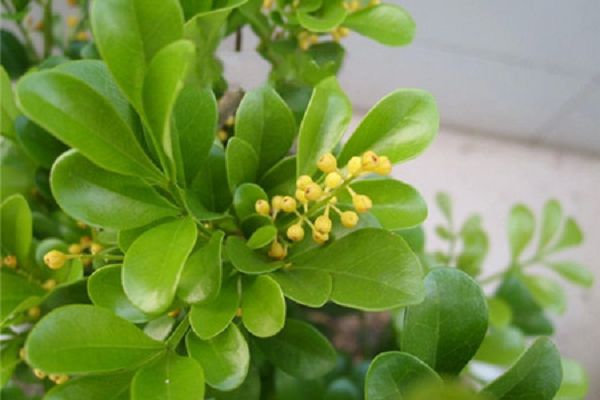Control of root rot of Clivia grandiflora
Distribution and harm
It mainly harms the seeds, seedlings and adults of Magnolia grandiflora.
Symptom
It occurs from time to time on seeds, seedlings and adult plants. After sowing, due to low temperature and humidity, the seed germination time is prolonged, the radicle becomes brown to grayish brown, sunken and soft, rotten, and some rot to the endosperm, so that the seed becomes an empty shell. The infected roots of seedlings and adult plants become grayish brown or brown, and in the later stage, only the epidermis is left, so that they can not absorb water, and when they are serious, the roots all rot away.
Pathogen
FusariummarticllaWr. It is called Fusarium oxysporum, which belongs to half-known fungi. In addition, too much watering will first cause retting roots, and a long time will also cause rotten roots; the mixed use of Bordeaux solution and carbofuran will also cause the heart of gentleman orchid.
Occurrence regularity
When the pathogen overwinters in the soil, when the spring is cold, the soil temperature is low for a long time, or the watering is high in humidity, especially when the cold current invades frequently, root retting is easy to occur. The application of undermature organic fertilizer will cause root burning, retting root or burning root for a long time. It will induce Fusarium invasion and form root rot.
Prevention and cure method
The main results are as follows: (1) carefully preserved Magnolia likes to be cool, the suitable growth temperature in daytime is 14: 25 ℃, the night temperature is about 15 ℃, the overwintering temperature should be higher than 5 ℃, and the soil temperature in bud period should be controlled at 20 ℃, which should not be too high or too low. More than 30 ℃ is disadvantageous to growth and easy to occur. In the vigorous growth season, the basin soil should be kept moist, but there should be no stagnant water. some people are afraid of rotten roots and excessive water control, resulting in insufficient water, affecting normal growth and development, and the phenomenon of dim and dry tip of leaves, arrow entrapment or fleshy root atrophy during flowering. Seedling watering should not be too much, gentleman orchid into the dormant period should not be watered, otherwise there are rotten roots in the soil, aboveground roots and yellow leaves, prone to root rot.
(2) the cultivated soil is required to be fully mature, loose and fertile, and highly permeable. Magnolia should not use farm manure or chemical fertilizer, and pot growers had better choose special fertilizer or decaying soil under broad-leaved forest. You can also stir-fry the perilla and bury it at the bottom of the basin when changing soil. Organic rotten liquid fertilizer should be applied alternately every semimonthly except in hot or cold season. If the curing temperature is higher than 25 ℃, it is necessary to stop fertilizing or lose weight, otherwise the plant can not be absorbed, and it will cause root rot.
(3) Cymbidium prefers a semi-overcast environment and receives sunlight in autumn and winter, which is conducive to flower bud differentiation. When the sun shines directly from May to June, it is necessary to shade the orchid and maintain a relative humidity of 6070%. Enter the room at the end of autumn after a period of about 10 ℃, and keep the air fresh and moist after entering.
(4) in order to prevent rotting roots, the method of accelerating germination and sowing should be adopted from the seedling stage, the seedling substrate should be boiled with sand or sawdust for 30 minutes, and the seedling temperature should be controlled at 15-25 ℃. If rotten roots are found in adults or seedlings, the matrix can be changed in time and surgical treatment can be carried out. After taking off the basin, cut off the discolored part and decaying roots, not immediately on the pot, the plant should be placed in a clean place of 5-lO ℃, and so on after the root wound heals, there is no sign of continued decay, and then on the pot, after the pot, the wet soil dry planting method is used, and the basin soil is dry and then irrigated, so that the operation is easy to succeed. Do not pour the basin too often, usually change the tile basin once every 3 to 5 years.
(5) the initial stage of the disease was sprayed with 50% Likujing wettable powder 800,900 times or 50% Genfuling wettable powder 1000 times, 95% Luheng No. 1 3500 times, 80% Fu ·Zinc wettable powder 70000x. Can also use plant power 2003, per milliliter of water lkg or Yunda-120plant growth regulator 3500 times liquid.
(6) for other methods, see Phnom Penh Daphne base rot.
Related
- Is the orchid suitable for indoor use? Is it good for the body?
- How to prevent the empty root of orchids?
- What to do after the crab claw orchid is withered?
- Why are the leaves of orchids always yellow? Fertilizing and watering.
- Can the root of the gentleman orchid be saved if it is rotten?
- Diagnosis and treatment of cotton-blowing beetle insects in Cymbidium
- There is a way for a gentleman's orchid to rot.
- What is the most suitable temperature and humidity for the orchid?
- How to raise a gentleman's orchid? Cultivation techniques of Cymbidium
- How to prepare the nutritive soil for the cultivation of Cymbidium



